Tl; dr;
- Deep user understanding: The essence of product experience design lies in comprehensively understanding customer needs through product research
- Customer feedback: Use online surveys to collect and analyze customer feedback, ensuring product improvements are aligned with user expectations.
- Interaction simplification: Essential to product experience is reducing user effort by streamlining tasks and creating intuitive navigation.
- Design consistency: Consistency in visual and functional design breeds user confidence and enhances the overall online experience.
- Performance optimization: Prioritize swift and smooth product performance to minimize user frustration and increase customer satisfaction.
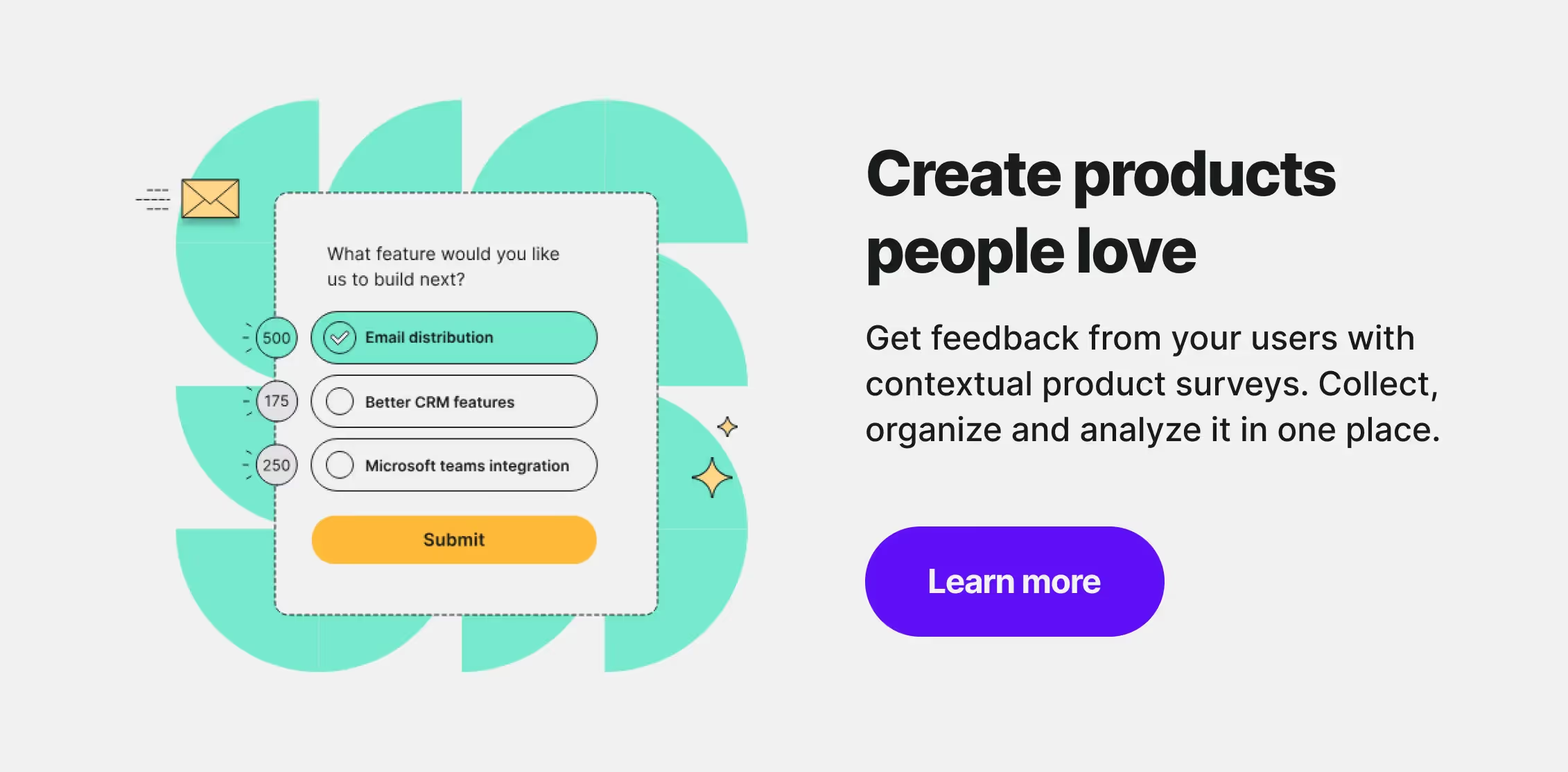
Creating a product that users love and keep coming back to isn't just about the bells and whistles; it's about crafting an experience that resonates with them on a deeper level.
Whether you're a designer, a product manager, or a startup founder, understanding how to elevate the product experience is crucial. This article outlines five actionable strategies that target the core aspects of product experience. By implementing these approaches, you'll solve user problems more effectively and foster loyalty and advocacy for your product.
Dive in to discover how you can transform your product's user experience into something truly remarkable.
Product experience fundamentals
Product experience encompasses every interaction you have with a product, from discovery to purchase and use. It's a comprehensive journey that shapes your perception and satisfaction.
What is product experience?
Product experience (PX) is the sum of all experiences users have with your product. It includes their sensory reactions, emotional responses, and the utility they gain from the product. A positive product experience drives repeat usage and loyalty. Digital products emphasize interface intuitiveness and performance.
How is product experience different from user experience?
User Experience (UX) focuses on the overall relationship between you and a product, encompassing all touchpoints and interactions. UX involves design, usability, and function.
Product Experience (PX), on the other hand, is specifically about the sensations, emotions, and perceptions you take away from interacting with the product itself.

Why is product experience important?
The significance of product experience lies in its impact on your satisfaction and subsequent decisions. A strong PX can lead to:
- Higher customer retention: Satisfied users are more likely to remain loyal.
- Word-of-mouth marketing: Enthusiastic users often recommend products they love.
- Market differentiation: Products with superior digital CX stand out in a crowded marketplace.
Understanding product experience will help you optimize your offerings to better meet customer needs and exceed expectations.
Designing for a great product experience
Creating a product that stands out in the market involves more than just good design and innovative features; it requires a focus on the overall product experience.
A great PX is seamless, intuitive, and enjoyable, encouraging users to come back time and again. Let's go through the strategies to enhance the product experience.
1. Understand user behavior
The foundation of a great product experience is a deep understanding of your users' needs, preferences, and behaviors. Conducting thorough user research is essential to gain insights into what your customers really want.
This can be achieved through various methods, such as online surveys, user interviews, and usability testing. By understanding your user, you can design a product that not only meets but exceeds their expectations.
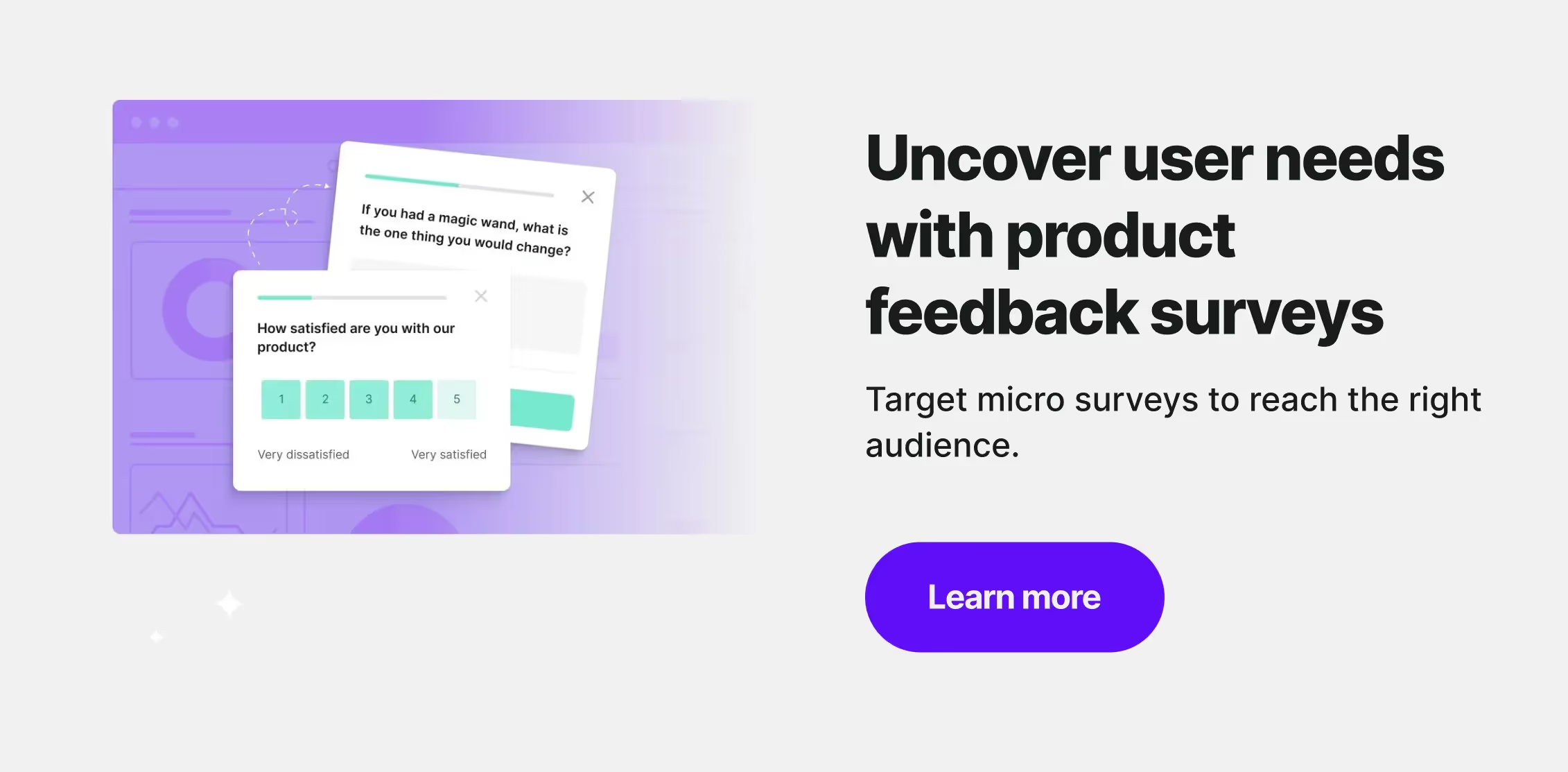
2. Gather Customer Feedback
Continuous improvement of a product is fueled by customer feedback. Actively seeking and listening to customer opinions provides invaluable insights into how your product is used and what could be improved.
Implement different types of surveys across various touchpoints along the digital journey and collect user feedback. Analyze this data to identify patterns and prioritize changes that will significantly impact the customer experience.
3. Simplify user interactions
A product that is easy to use is more likely to be adopted and praised by users. Simplifying user and customer interactions means minimizing the steps needed to perform a task, using clear and concise language, and ensuring that the navigation is intuitive.
The goal is to reduce friction points and make the user's journey through your product as effortless as possible. This often involves streamlining features, decluttering interfaces, and focusing on the actions that provide the most value to the user.
4. Ensure consistency across the product
Consistency in design and functionality helps users learn and navigate your product more quickly. This includes maintaining a uniform visual language, such as colors, typography, and iconography, as well as consistent behavior of elements across the product.
When users know what to expect, they feel more confident and comfortable using your product, which enhances their overall experience.
5. Optimize for performance
A product that performs well is critical for a positive user experience. Users are easily frustrated by slow load times, crashes, or bugs.
To optimize for performance, focus on efficient coding practices, use high-quality hosting solutions and regularly test the product to identify and fix issues. A product that responds swiftly to user input and operates smoothly will keep users engaged and satisfied.
By applying these strategies, you can design a product that not only meets the functional
Designing for a great product experience demands a deep understanding of your customer needs and a commitment to excellence in functionality and aesthetics. It involves a series of strategic steps and methodologies to ensure the product is delightful and efficient.
Product experience metrics
Evaluating product experience is critical to understanding user behavior, in other words, how users interact with and value your product. Accurate measurement can guide product improvements, enhance user satisfaction, and drive business growth.
Customer Satisfaction Scores (CSAT)
Your existing customers can provide direct feedback on their satisfaction with your product through Customer Satisfaction Scores (CSAT). This is usually obtained by asking customers to rate their experience on a scale, such as 1 to 5 or 1 to 10.
Net Promoter Score (NPS)
Net Promoter Score (NPS) is a metric that gauges long-term customer loyalty and satisfaction. It's calculated based on responses to the question, "How likely are you to recommend our product on a scale of 0 to 10?"
User Engagement Metrics
User Engagement Metrics reflect how users interact with your product. Examples include:
- Daily Active Users (DAU)
- Session length
- Pages visited per session
Tracking these metrics helps you understand usage patterns and identify areas for improvement.
Retention and churn rates
Customer retention rates indicate the percentage of customers who continue to use your product over time, while churn rates reveal the percentage of customers who stop using your product. Maintaining high retention and low churn is essential for long-term success.
How to improve your product experience
Improving product experience is essential to retain users and drive more customer lifetime value. Focus on these key strategies to optimize how users interact with your product.
Customer journey mapping
Identify every touchpoint between your product and customers. Create a digital journey map detailing each interaction stage, from awareness to purchase and beyond. Use a table to list the stages, touchpoints, and possible improvements:
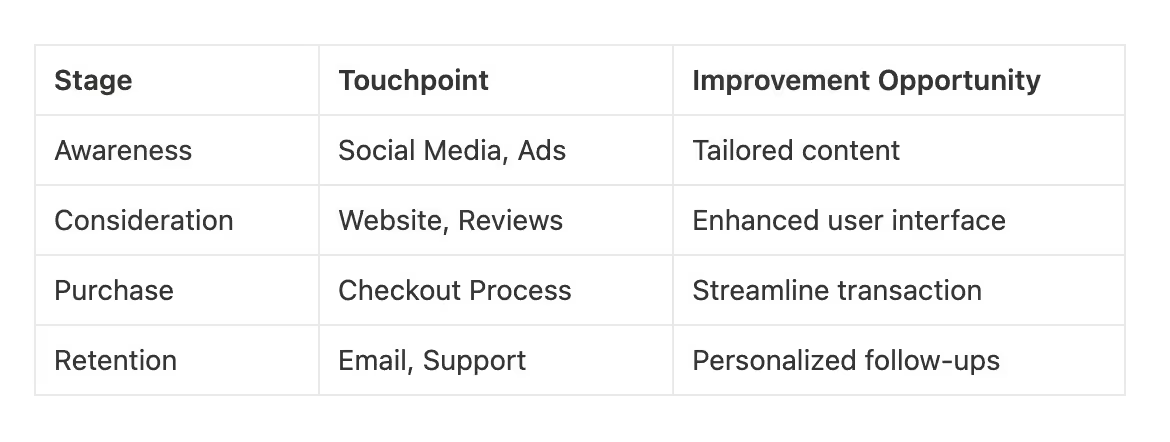
Personalize customer experience
Personalize customer experience to make users feel valued. Use data to tailor customer experiences to individual preferences. You can customize email campaigns with the user’s name and recommended products based on past purchases.
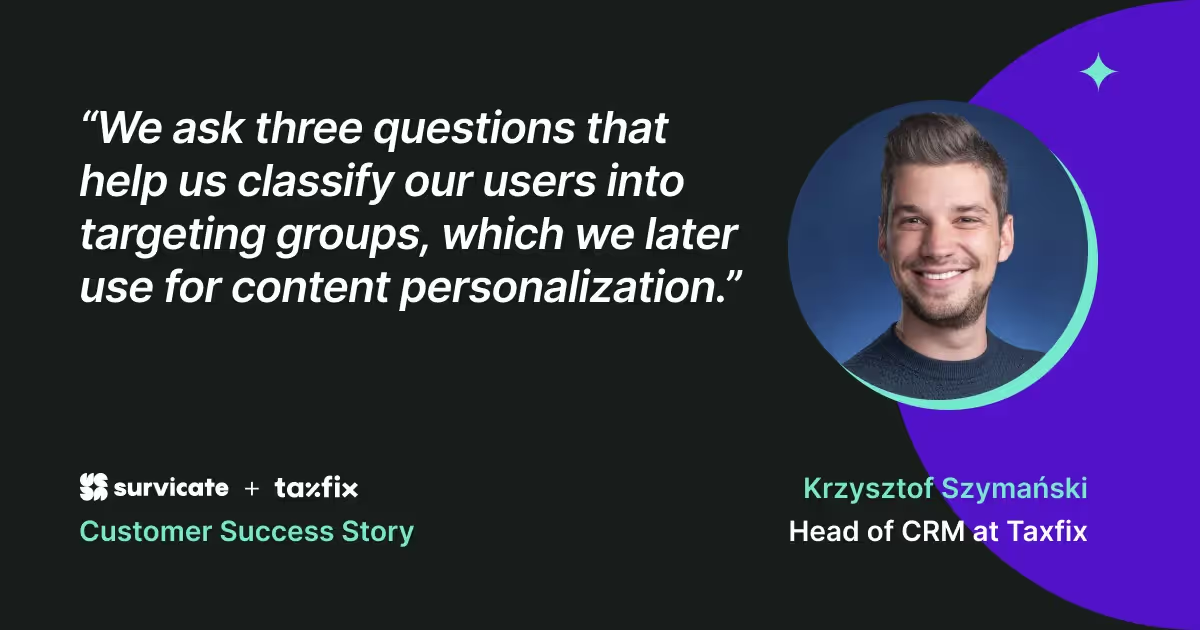
➡️ Check how Taxfix uses customer feedback to personalize their product experience and boost retention. Read the customer success story.
Use iterative design and testing
Apply an iterative approach to design and testing. Launch your product in phases with small, manageable updates. Collect data from each phase to inform improvements. This design, testing, analysis, and iteration cycle ensures continuous enhancement of the user experience.
Ask for customer feedback and act on it
Remember to include gathering user feedback in your customer journey. You can do it through online surveys, interviews, and usage data. For example, with Survicate, you can use surveys across all key touchpoints and collect insights on user onboarding, feature adoption, and general product engagement.
By analyzing it, you can detect any friction points. When you act upon the feedback you get and close the feedback loop, you can eventually increase adoption and reduce churn.
Improve your product experience with Survicate
Designing a great product experience is an ongoing journey that requires attention to detail, a deep understanding of user needs, and a commitment to continuous improvement.
By focusing on understanding user behavior, gathering and acting on customer feedback, simplifying interactions, ensuring design consistency, and optimizing for performance, you can create a product that not only meets but exceeds user expectations.
This is where Survicate comes into play. With its intuitive survey creation tools, in-depth analytics, and seamless integration, Survicate allows you to capture real-time feedback that is essential for refining the user experience. Whether you're looking to gauge customer satisfaction, understand user behavior, or test new features, Survicate provides the insights you need to make informed decisions.
Elevate your product experience by tapping into the power of customer feedback. Start your journey to a better product today by visiting Survicate.com and signing up for a free 10-day trial that unlocks all the Business Plan features.
Your users are waiting for a product experience that delights them—make it happen with Survicate.
Product experience FAQs
What are product experience lifecycle stages?
Product experience lifecycle stages are key to understanding how customers interact with a product, from initial contact to long-term engagement. These stages map out your customers' journey, highlighting areas where you can enhance their experience.
Onboarding
Onboarding is your customer's introduction to a product. It's crucial that this process is straightforward and informative to ensure a positive first impression. Your goal here is to facilitate a smooth start with clear instructions and support that empowers users to begin using the product effectively.
Adoption
During Adoption, customers start integrating the product into their routines. To assess adoption rates, track how frequently and thoroughly your customers are utilizing the product's features. This stage often involves learning curves, so providing resources to help customers understand the product's full value is essential.
Retention
Retention measures how well a product keeps customers over time. Consistent use indicates that customers find the product valuable. To maintain high retention rates, analyze usage patterns and develop strategies to keep your product relevant and indispensable to your customers.
Loyalty
Customers have consistently used the product at the loyalty stage and started advocating for it. You can quantify loyalty through repeat purchases, subscription renewals, or a Net Promoter Score (NPS). Loyal customers are often less price-sensitive and more open to trying other products you offer.
Feedback
Feedback is an ongoing process but is recognized as a distinct stage due to its impact on all other lifecycle stages. Continuously gather and analyze feedback to discern what enhancements or changes are necessary. This insight allows you to adjust and improve the product experience, which feeds back into onboarding and subsequent stages.
Who owns product experience?
Product experience is shaped by every interaction you have with a product—from the initial discovery to the post-purchase support. A single individual or department doesn't own it; rather, it's a collaborative result encompassing various roles within a company.
- Design Team: You can credit the design team for crafting the product's usability and aesthetics, ensuring that it not only looks good but is also user-friendly.
- Development Team: They transform designs into reality, building the functional aspects of the product that you interact with.
- Marketing Team: These individuals are responsible for communicating the product's value and features to you, influencing your perception and expectations.
- Customer Service: Support staff enhance or detract from your product experience through their responsiveness and effectiveness in solving your problems.
- Sales Team: By understanding your needs, the sales team can tailor the product experience, making sure that the product you purchase aligns with your expectations.
Product experience is collectively owned by the company providing the product. It's an integrated effort that involves your journey with the product at every level. Each team contributes to building a consistent, engaging, and satisfying experience that meets your needs and expectations.








.webp)


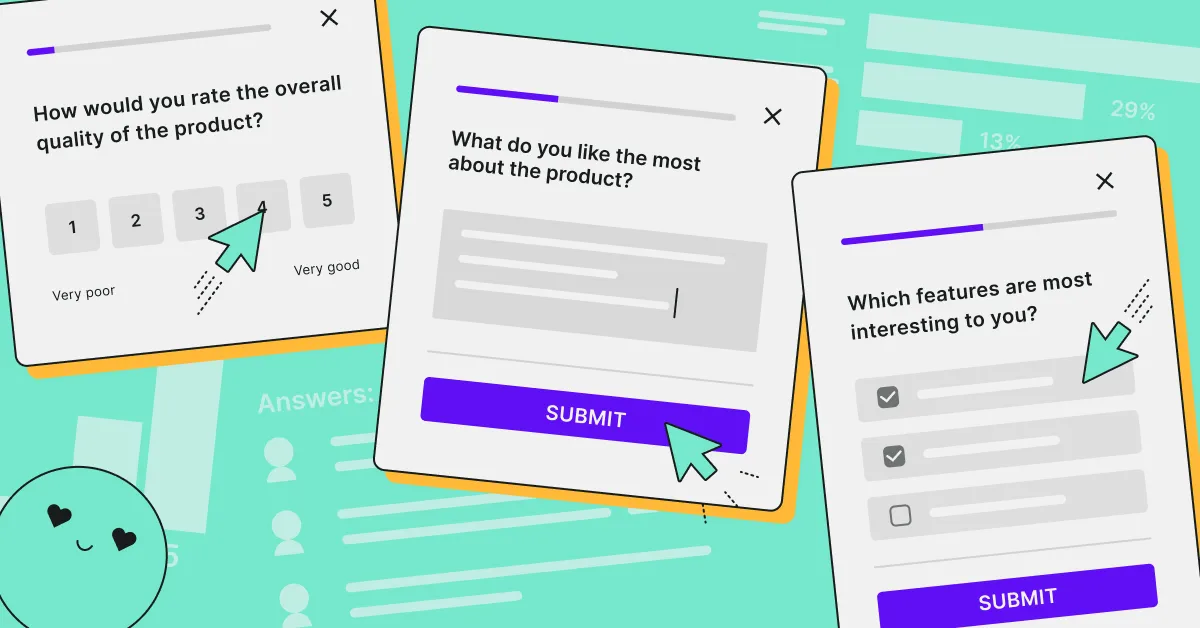
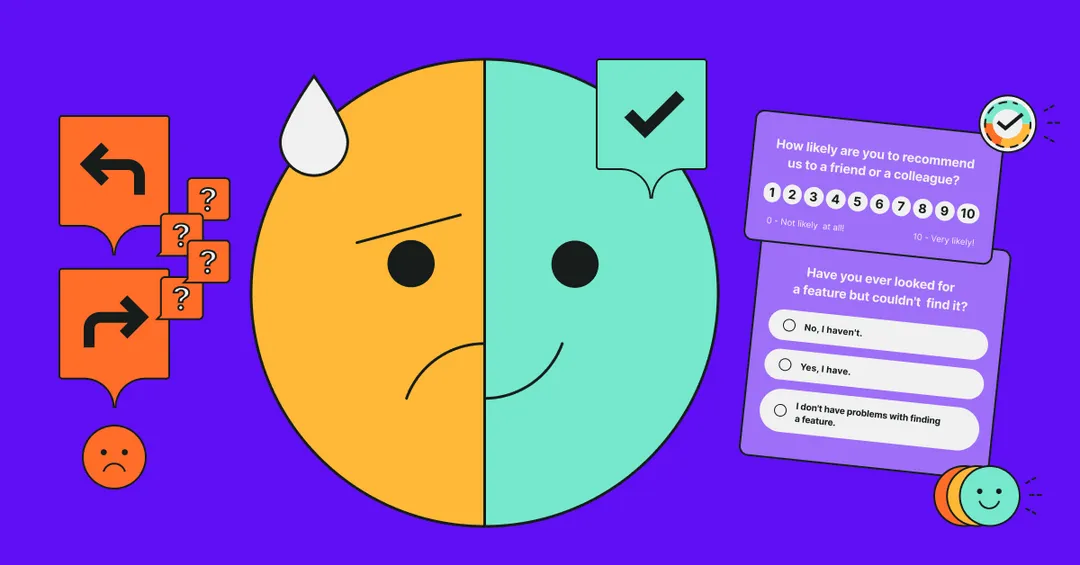
.webp)
.webp)
.svg)

.svg)



